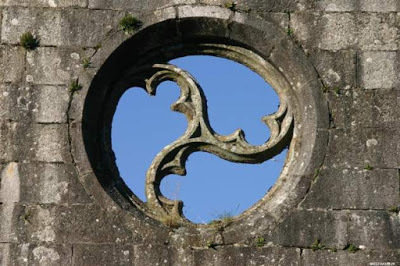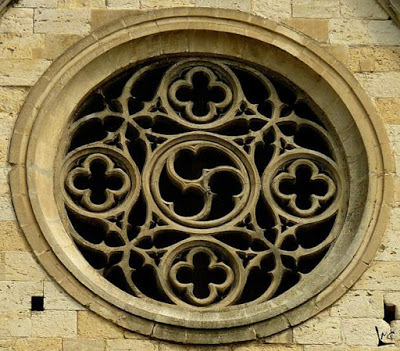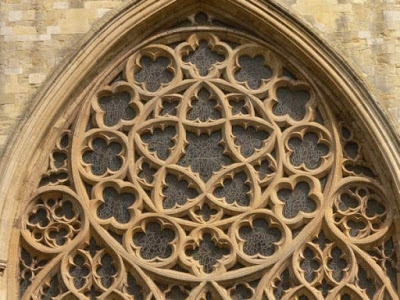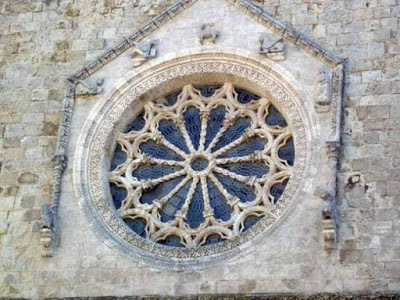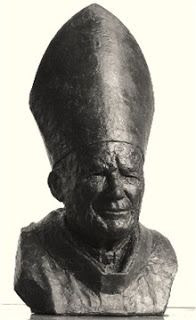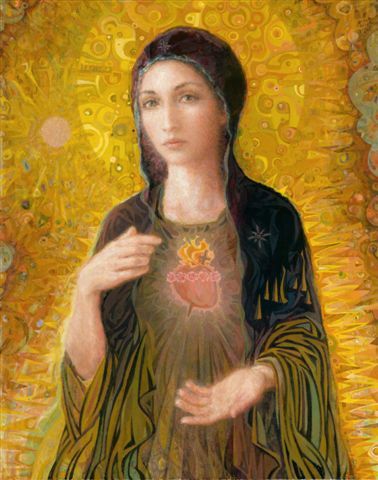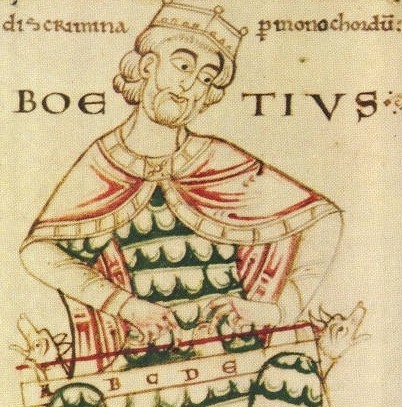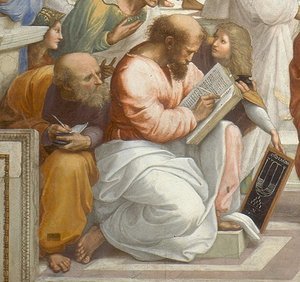David Clayton's Blog, page 6
December 4, 2017
12th Century Wall Painting in Durham Cathedral – A Tradition for Today
How about this from Durham Cathedral – St Cuthbert in the style of the School of St Albans? It is in the Galilee Chapel at the Romanesque cathedral in northern England. I suggest that this approach of simple line drawings describing form, and simple coloration is one that artists of today could adopt. If they do so, a wonderful new 21st-century gothic style can emerge for the greater glory of God and the Church! If done’ properly this would be simultaneously contemporary and traditional in a way that speaks powerfully of the Faith.

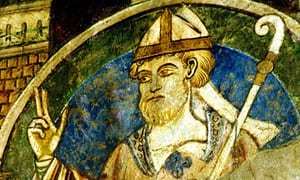
This shows that the miniature illuminations of Matthew Paris, which www.Pontifex.University promotes, can work well on a grand scale on walls too. Here is a miniature by Matthew Paris, from the 13th century.

I say on this pilgrimage of life, let’s set the bow of the barque headed firmly towards heaven, with tradition at the tiller!
Artists! Learn to paint in the style of the School of St Albans in the www.Pontifex University. My course, A Study of Artistic Method for Patrons and Artists not only teaches you how to paint in egg tempera, but it explains the principles by which you can make any style of art you like your own; and it so happens that the style I focus on in the class to illustrate is the School of St Albans style, as seen in the Galilee Chapel of Durham Cathedral!
Here are some more photos of Durham Cathedral to give you some context.

 The Norman nave of Durham Cathedral, a World Heritage Site, Durham, County Durham, England, UK.
The Norman nave of Durham Cathedral, a World Heritage Site, Durham, County Durham, England, UK.

November 30, 2017
St Andrew – Apostle, Martyr
Today is the Feast of St Andrew who, as an Apostle, is mentioned in the Roman Canon of the Mass.
Before he was called to follow Christ he was a follower of John the Baptist and like him, he is depicted with unkempt hair.

Here are two more icons that caught my eye. The second of the two was painted by Sr Petra Clare and it hangs in Pluscarden Abbey in Scotland. I remember seeing it many times when I visited.


The cross upon which he was martyred, during the persecution of Nero, is a characteristic X shape. As someone from the British Isles, I am well aware of this because he is the patron saint of Scotland and the Scottish flag depicts it symbolically. This was incorporated into the Union Jack sometime after the formal union of the two countries in the 18th century.

The martyrdom itself is depicted in Western portrayals of the saint. For example here is one by Rubens in characteristically dramatic style. In accordance with tradition he is shown bound, not nailed, to the cross:

Andrew was the brother of St Peter and the portrayal of the calling of the two as fishermen who will become ‘fishers of men’ is another common scene in Western portrayals.
Here is Duccio’s painting…

…an early mosaic from Ravenna (note how Christ is beardless)…

I do not know who the figure in the toga is on the right. Below is a baroque painting of the same scene.
 FIT58808 The Calling of St. Peter and St. Andrew, c.1626-30 (oil on canvas) by Cortona, Pietro da (Berrettini) (1596-1669); 28.7×57.4 cm; Fitzwilliam Museum, University of Cambridge, UK; Italian, out of copyright
FIT58808 The Calling of St. Peter and St. Andrew, c.1626-30 (oil on canvas) by Cortona, Pietro da (Berrettini) (1596-1669); 28.7×57.4 cm; Fitzwilliam Museum, University of Cambridge, UK; Italian, out of copyrightThis is one of a series of articles written to highlight the great feasts and the saints of the Roman Canon. All are connected to a single opening essay, in which I set out principles by which we might create a canon of art for Roman Rite churches, and a schema that would guide the placement of such images in a church. (Read it here.) In these, I plan to cover the key elements of images of the Saints of the Roman Canon – Eucharistic Prayer I – and the major feasts of the year. I have created the tag Canon of Art for Roman Rite to group these together, should any be interested in seeing these articles as they accumulate. For the fullest presentation of the principles of sacred art for the liturgy, take the Master’s of Sacred Arts, www.Pontifex.University.
November 28, 2017
Rose Windows and Sacred Geometry – the Ancient Mystical Path to God
I have just been creating a new online course on the mathematics of beauty and as part of this, I wanted to show how to represent the symbolic meaning of number in the context of the liturgy in such a way that it might deepen participation. The obvious way to do this is to have a pattern with the symmetry of the number. This will require also some catechesis of the congregations so that they are reminded of what it is pointing to every time they see it.
It can be part of the decoration of the church, incidental, as it were, to the structure:
Or it can be more intimately and obviously bound with the form of the church, as it is in the medieval rose window. Here is a window dating from about 1500 in the cathedral at Amiens in France:
It is important to awaken our innate sense of the symbolism of the natural world and all that is created as this stimulates also our natural sense of the divine. The awe and wonder that we feel when we contemplate the world around us is, for all that it seems profound, little better than a shallow emotion generated artificially by a drug if we stop there and do not allow it to draw us closer to its source – God. This is its true consummation, we are made to see the glory of God in his creation and it will be to his greater glory and our greater joy if we allow the beauty of the world to take us to what it points to.
We can consider this to be a form of relation. Creation is in relation to its Creator. By virtue of its existence, it is relational, for it is connected to its Creator by the mark of divine beauty He has impressed upon it. This interconnectivity of all that exists, therefore, is not a mental construct thrust upon the cosmos artificially by mankind. Rather it is a property of the object that we see. All being is relational by nature and is patterned lattice that has the Creator at its heart.
As created beings ourselves, we participate in this dynamic too, seeing a natural connection between ourselves and the rest of the cosmos. All of mankind is endowed by the Creator with an intellect and the capacity to observe the world around us in such as way that it can derive from it an understanding of our place within it, and ultimately this points to and sheds light on our relationship with the Creator.
Part of our task as people seeking to evangelize the world is to re-awaken the final link in the chain of connection between creation and Creator by re-establishing a culture that is rooted in this principle of interconnectivity through its beauty. This process of evangelization of the culture begins in the church in which all that we perceive and all that we do participates in this language of symbol and is there to connect us to God.
Coming back to the symbolism of number, it is widely accepted, even in the secular culture, that the natural world is connected to mathematics. The connection is so strong that few, if any, doubt, for example, the power of mathematics to help the natural scientist to describe the processes of the natural world. However, I think we should stop for a moment and think about this – it need not automatically be the case. Once I realised this it became a source of great wonder to me that the abstract world of mathematics is so intimately bound in its structure with the behaviour of the natural world.
This had to be noticed before the connection could be made, and it is why figures such as Boethius commented, in his De Institutione Arithmetica, (Bk1, Ch.2) that ‘number was the principal exemplar in the in the mind of the Creator’ and from this is derived the pattern of its existence that the scientist observes.
The natural scientist of today is generally less aware of the symbolism that runs through both nature and mathematics. The medieval thinker would not have rejected method of today’s natural scientists I suggest but would have added to his description of the natural world the symbolic language of number, which is largely forgotten today. If scientists were to do this today, I suggest that it would inform his work in such as way that technology would both enhance his work as a conventional scientist and allow its applications to become more in harmony with the flourishing of man. Rather than being in conflict with today’s scientist, the proponent of sacred number has something that can help him to be a better scientist.
Geometry is a way in which number can be expressed in space through matter, and so this is why geometric patterned art ought to be right at the heart of the evangelization of the culture and any sacred art. It is also why the study of the symbolic meaning of number in conjunction with the study of geometry is so important in a Catholic education today. What I propose is a study of geometry that is so much deeper, and more exciting than the dull task of memorizing Euclidian proofs (which sadly seems to be the way it is taught in Great Books schools today). This is about connecting the pattern of the universe to the creative impulse of man so that the beauty of the culture can direct us to God even more powerfully than the most beautiful sunset you have ever seen.
And so this is why I would like to see the rebirth of the Rose Window, in our new churches. This is more than simple decoration, if done well it has the power to stimulate in us a profound sense of our place in the world and in relation to God. Always assuming that even if we got as far as seeing them in churches, the catechesis available would be minimal or poor (we’re Catholics!) these would need to be designed in such a way that the symbolism was obvious. There is nothing stopping words and scriptural quotes being added, just as we must in figurative art, in order to clarify, for example.
Here I give some examples of such windows with, three, four, five and sevenfold symmetry. I have obtained these photographs from a great resource that I discovered online called therosewindow.com, run by Painton Cowen, who kindly gave us permission to reproduce his photographs here. This site has photos of windows based upon numbers that you don’t normally associate with Christian symbolism – 11 and 13 for example. I would want to consider carefully the basis of these before replicating them today. We must learn from the past, but we must be aware also that not everything that it tells us is true!
Here are some images.
Three, 15th century, Barrien, France:
Four and three in a quincunx arrangement of five objects, 15th century, Agen, France
Five, Exeter, England, 13/14th century:
Seven, Beaulieu en Rouergue, France, possibly 14th century:
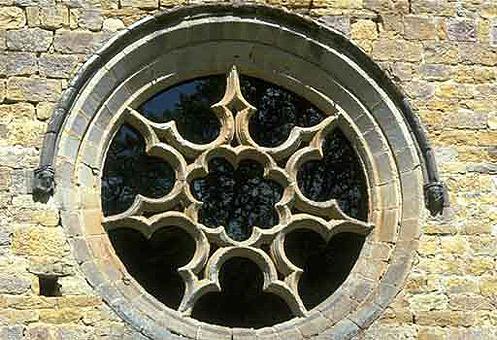
If you want to know more about the symbolism of number and the philosophy behind it, I suggest that you either read The Way of Beauty or take the course, the Mathematics of Beauty which will soon be offered at www.Pontifex.University, Master’s in Sacred Arts program.
In the meantime…believe it or not, lucky thirteen! Larino Duomo, Italy,
November 27, 2017
Should An Icon of a Soldier Show Him With Fatigues, Chainmail, or a Roman Kilt?
Anyone who has ever seen an icon of St Therese of Lisieux painting or John Paul II will know how difficult it is to paint an icon of a modern figure. There are two problems associated with them that I can think of:
Firstly, when the facial features are well known through photographs, there is a tendency to over naturalize the facial and the mismatch with the stylization of the rest of the figure and it ends up looking like an iconographic version of a head-in-the-hole picture

Second is dealing with contemporary clothes. While it seems to have been fine in the middle ages to paint the soldiers of their past in contemporary chainmail because the idea of awareness of what the biblical soldiers might actually have worn was different (here’s Samual anointing David and David slaying Goliath).

…I don’t think it would work today. We would use historical dress. When it comes to contemporary saints, such as the 21 Coptic Christian martyrs beheaded by ISIS, the iconographer can’t suddenly put them in historical clothing to give the aura of holiness but must aim to represent the clothes they wore in an iconographic way.
Here is an icon by a neo-Coptic iconographer of the 21 martyrs. Notice the sensitive way that the painter has handled the faces and the clothes, to create a contemporary icon very well, even portraying the bright orange jumpsuits that the prisoners wore.
Artists! Do the Master’s in Sacred Arts at www.Pontifex.University
August 15, 2017
John Paul II Foundation for Sacred Arts – An Innovative and Entrepreneurial Answer to Paying Artists Well for Good Work
Here is an exciting and innovative approach to financing original works of sacred art. It comes from the recently formed John Paul II Foundation for Sacred Arts.

It is a free market approach in which artists are motivated to create work of sufficient quality that it will fulfil its purpose fully, which means that it will connect with congregations in their worship. If he fulfils both of these criteria, then through this system, he will generate enough return that he will have more than a living wage.
Instead of a traditional endowment or commission model, the Foundation partners with artists in an entrepreneurial venture to fund a given project at cost. This format makes funding sacred art financially accessible to donors of all levels. Grants are crowd-funded and paid in installments throughout the creative process to pay the artist’s material costs and living expenses. Upon its completion, the artist retains primary ownership of the work, while the Foundation enjoys a share in the proceeds of any sale of the work, associated prints, or revenues from displaying the work.
The great strength of this, is that once the artist is selected for crowd-funding, he is still not guaranteed success. The funding will only come if the crowds are interested, so to speak. In other words, it must appeal to large numbers of ordinary, non-elites as well.
This is the ultimate test of beauty – it appeals to the cognoscienti and hoi polloi alike. As Benedict XVI said in A New Song to the Lord (p123): “It is precisely the test of true creativity that the artist steps out of the esoteric and knows how to form his or her intuition in such a way that the other – the many – may perceive what the artist has perceived.”
This is saying that while all that is popular is not beautiful; all that is beautiful will be popular (provided enough people are exposed to it). Therefore, the judges who consider its appropriateness for sacred art must consider also whether this is likely to connect with congregations. If they get it wrong and no one wants to fund it, they won’t make the same mistake twice! It is, in part at least, self-selecting.
Some artists may still argue that they won’t be able to access this funding unless they can first jump through the hoop of judges’ selection. This is true. But if that happens to you…start your own crowd-funding foundation! The best will rise to the surface and the crowds will decide which judges they trust, and whose art they want to back.
The Foundation is inspired by the personal experience of its founder, Fr. Michael Burbeck, who had a profound conversion sparked by the transcendent beauty he found in the great churches of Europe. This encounter with beauty set him on a path to the Catholic faith and, ultimately, the priesthood.
He told me:
As then-Cardinal Ratzinger wrote, “The encounter with the beautiful can become the wound of the arrow that strikes the heart and in this way opens our eyes.” Similarly, because of beauty, I found the Catholic Church, fell in love with her, and was convinced of the truth of her teachings. That is the power of sacred art.”
The art I encountered was the fruit not only of a culture of faith, but of a system of patronage where art and artists were promoted and financially sustained. That system no longer exists, and yet, as Pope St. John Paul II says so plainly in his Letter to Artists, “the Church needs art.” The John Paul II Foundation for the Sacred Arts exists to help meet that need — to promote sacred art by partnering with artists who share our belief in the evangelical power of beauty.
The Foundation is currently funding its first work, a painting of Our Lady of Guadalupe by Cameron Smith – a full-scale re-presentation that the artist describes as “faithful to the message and spirit of the original mystical image … simultaneously familiar and strikingly new.” It is our hope that this work of authentic beauty will bring the image and message of Our Lady of Guadalupe to a new generation.
This is so different from the most common model of organizations founded to promote beautiful art in the Church. The standard format that I have seen is to have a call for artists, organize an exhibition, and then have an event with prominent speakers to draw people in to see it. The weakness of this model is that the assumption is that the artists are already out there and all we need to do is publicise their work. What happens in practice is that the exhibition is forced to lower standards in order to have enough art to show. People listen to the high ideals of the rhetoric, and they can see that the art doesn’t match up to it and as a result very little happens except that it undermines the message.
Every time such an event is organised, I always hope I will be proved wrong and perhaps things have improved enough now so that such events will be successful. If so, terrific! Nevertheless, the John Paul II Foundation at least provides some alternative approach that can be responsive and allow the style that connects with congregations today to emerge organically and naturally if it isn’t there intitially.Regardless, the John Paul II Foundation at least provides an approach that can be responsive and allow the style that connects with congregations today to emerge organically and naturally if it isn’t there intitially. This need not be an alternative – it is method that could be added to existing intitative as well, it seems to me.
For more information or to make a donation, visit their website: www.sacredartnc.org or contact director@sacredartnc.org.
For more information on Cameron Smith and his work, visit www.smithcatholicart.com. Two examples of his work are shown below.
August 7, 2017
Benedict XVI on the Importance of Music in Catholic Culture and Catholic Education
Here is a fascinating paper by Dr Tom Larson of St Anselm College in Manchester, New Hampshire entitled Man, Music and Catholic Culture. He presented it at the Institute of St Anselm Studies, an annual symposium which takes place the college campus each summer. It has just been published in the proceedings and is now online.
Dr Larson examines first the place of music in Greek philosophical tradition and compares this with accounts of two modern commentators. The first, a non-Christian philosopher Allan Bloom, whose thoughts he presents as a foil to a modern Christian view, that of Pope Benedict XVI.
Larson’s discussion clearly applies to sacred music and reinforces all that has been said on the importance of music in the liturgy. But he extends this also to the profane and considers the place of music in the wider culture too.
Here is the abstract for the paper:
The topic of this paper is the place of music within the Catholic intellectual tradition. The paper discusses the dignity of music, its relationship to man, and its place in education. The paper begins with the pagan classical treatment of music. The classical account of music is bound up with certain claims about human psychology, education, and culture, as well as certain claims about the universe. Allan Bloom’s discussion of music in the Greek philosophic tradition is examined as a foil to the Catholic vision discussed in the second part of the paper. The second part presents Joseph Cardinal Ratzinger/Pope Benedict XVI’s understanding of music’s place in Catholic culture. Music, along with laws of beauty and order, has its source in God; it contributes to the re-integration of Man and directs him toward union with God in prayer; it has an intimate relationship with the human longing for transcendence; as a universal language, it has a role in evangelization and facilitating inter-cultural dialogue; in its beauty we are enabled to experience the presence of Ultimate Beauty; and in its own and very powerful way, the beauty of the music that has grown out of Christian culture serves as a kind of verification of the Christian faith.
August 2, 2017
Boethian Rhapsody – An English Translation of Boethius’s De Institutione Musica Made Available
I have been frustrated by the fact that it is difficult to get hold of an English translation of the only extant part of Boethius’s influential book on music. It had been stored on my laptop, but it crashed last month and I lost all stored files. Finally I found an old email, from about 10 years ago in which somebody sent me a copy. So, to make sure this never happens again, I am going to publish it on my blog so that it is freely available. Here we have the 30 odd chapters of Book 1.
So here it is!
We will be studying this in an upcoming class at www.Pontifex.University which will be on Sacred Geometry and Sacred Number – the Traditional Mathematics of Beauty and Cultural Transformation which I will be offering in the Fall. By the way, h/t to a fellow blogger Baroque Pearls for the snappy headline. I’d like to take credit but modesty forbids. Incidentally in his article, I am flattered that he took the diagram for the musical harmony from my blog – I know because I drew it. I guess what goes around comes around.
Below are some pictures of diagrams of musical harmony from medieval manuscripts of the book, form. Plus Raphael’s painting of Pythagoras with a chalk board with the musical harmony diagram on it!
July 31, 2017
Why Faith is the Foundation of Right Philosophy
From where does our worldview come ? If we are worried about the philosophical errors of modernity it would be helpful to be able to answer this question.
If all right philosophy is derived from the adoption of right premises, the question then reduces to: how do we choose the axioms, the foundational truths, upon which the whole edifice is built?
The simple answer, it seems to me, is that most people just choose what looks good to them. It is a somewhat arbitrary process, an act of faith of sorts. Discursive reason does have a part to play in this but in my experience it is used most commonly to validate the intuitive choices already made, rather than to investigate their validity with a truly open mind.
Consequently, however rational and well worked out we think we present the case for the Christian worldview, unless people are ready to listen we are unlikely to get anywhere.
If we wish to change people’s minds then there are two approaches. One is to examine their worldview rationally and point out any contradictions. As mentioned, this is least likely to convince, simply because on the whole people don’t want to listen. If people do want to listen it might be because they are facing a crisis by which, in some way, the contradictions or inadequacies of their current worldview are slapping them in the face.
But even then I suggest that most will still only be prepared to listen if the second approach is taken as well. That is, people must be presented with a set of premises that are better – more attractive – than the ones they already have.
How can we do this?
I would say that this is what the method of the New Evangelization, as described by Benedict XVI, is aiming to do. (I have written an article about this, here).
For Catholics, the strongest presentation of these premises is encountered in the person of Christ in the liturgy. Through this encounter, because we are in relation with Truth, we are more likely to respond with an acceptance of the basic assumptions of, for example, the nature of existence in regard to all that we perceive around us. We say: I am – You are – it is. If this were to happen, in one stroke, the radical skepticism of much of modern philosophy would be banished; and by this we can accept the ideas of objective truth, beauty and goodness.
If this is right, then we can say that the acceptance of the pattern of truth that is the foundation of all good philosophy is made possible by the acceptance of the love of God. For to know Christ we must love Him. As I described in a recent article, the place where this love is most powerfully offered to us is in the liturgy and the acceptance of this love is an act that is termed eros. (See A Reflection on Eros, Acedia and Christian Joy.)
I suggest, therefore, that the best preparation for the study of philosophy for Catholics and the best defense we have against attraction to the errors of modern philosophy is offered to us in the sacred liturgy. That being so, it places a liturgical and mystagogical catechesis, which to my mind is one that is grounded in Sacred Scripture, as a priority in a Catholic education. This point has been made before. Following the work of Leo XIII (Providentissimus Deus), Pius X stressed the importance of the study of Scripture in the formation of priests in his letter Quoniam re biblica.
What about the unbaptised and those who never make it into church? How do we reach them?
The answer is that we must present Christ to them. Again this goes to Benedict XVI’s little paper on the New Evangelization. We must become supernaturally transformed and partake of the divine nature – a pixel of light in the transfigured mystical body of Christ, the Church. Then when we relate to others we present them, in some way, in the person of Christ. People will see the pattern of love, that is the foundation of good philosophy in us and be attracted to it…or that’s the hope.
Once presented with Truth, people are free to either adopt or reject what they see, but they are unlikely ever to adopt it if they are never presented with it!
It is possible to discern dimly, the pattern of Christ through creation. The ancient Greeks did so, as we know, through the beauty of the cosmos. But the cosmos does not reveal it as fully as the Church does.
This is why I would say that there is no true philosophy without the Faith, grace and the supernatural; and a lover of true wisdom is always a lover first of divine wisdom.
The good philosopher is really a philohagisopher!
Above, an icon of the personification of Holy Wisdom; and below: an ancient Russian icon of Holy Sophia with her three daughters, Faith, Hope and Love
Above, an icon of the personification of Holy Wisdom; and below: an ancient Russian icon of Holy Sophia with her three daughters, Faith, Hope and Love
July 26, 2017
Pontifex University Faculty Offering Program in San Francisco Bay Area
Discern Your Personal Vocation and Lead a Joyful Life
Here is an article that has appeared recently in both Catholic San Francisco and the Oakland Voice about a program being offered in the Bay Area, which we call the Vision for You. It is on page 5, here.
It is a series of spiritual exercises that I was offered over 25 years ago by a friend. Going through this process led to my conversion to the Catholic faith and to my becoming an artist. Both of these outcomes were against all odds – I was a cynical unhappy atheist when I met my mentor, David; and I couldn’t afford to go to art school. What convinced me to give it a go was seeing other people whom he had directed who demonstrated to me, as much in the way they were as anything else, that they had something in their lives that I didn’t have.
It was only once I came into the Church that I realised how lucky I had been to have met David. I always felt that this process of systematic discernment is something that should be offered more widely. Over the years I have passed it on to a number people, perhaps 50 or so, and have seen the same thing happen to them – nearly all who stuck with it developed a faith and a good proportion of those became Catholic.
One of the great postives about a Catholic education, such as that offered by Pontifex University, is that it forms to the person to transform the culture. You might say that it helps him to do whatever he does joyfully and gracefully.
The big question, which is often left unanswered, is: ‘But what am I meant to do? It’s all very well helping me to do something well, but surely it would help me to know what it is that God actually wants me to do, joyfully and gracefully?’
The Vision for You process, which is what I have called the program David gave me, answered these questions for me and so I see it as something that can be offered hand-in-hand with the formation that a genuinely Catholic education offers.
The article in San Francisco Catholic describes how a small group of us, including myself and colleague Pontifex University faculty member, Dr Michel Accad, are hoping to make this process more widely available.
Dr Accad is a medical practioner with a practice in the city of San Francisco, as well as philosopher who has published in the Thomist. He offers a course on the Philosophy of Nature and of Man in the Fall. Dr Accad, for example, has begun to suggest that his depressed patients might like to consider the process.
July 23, 2017
Catholic Social Teaching and the Market Economy
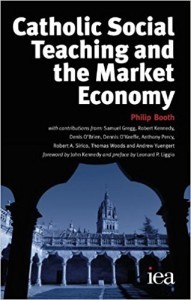 Anyone who is interested in an overview of Catholic social teaching and the economic policies that are in harmony with it should read this book. It is published by the Institute of Economic Affairs and is available from Amazon or as a free download from the IEA website here – I read it on kindle on my phone from this. If you order a hard copy be sure to get the second edition which is much fuller presentation.
Anyone who is interested in an overview of Catholic social teaching and the economic policies that are in harmony with it should read this book. It is published by the Institute of Economic Affairs and is available from Amazon or as a free download from the IEA website here – I read it on kindle on my phone from this. If you order a hard copy be sure to get the second edition which is much fuller presentation.
The contributors to this book clearly explain, in terms that people without prior knowledge could understand, the main ideas behind Catholic social teaching and consider how they might be realised practically. This is rooted in sound doctrine, and sound economics. This cannot be emphasized enough – so often discussions and public statements of what ought to be in society, even by member of the hierarchy of the Church, seems to be lacks.
The constributors to this book, which is edited by Philip Booth of the Institute of Economic Affairs, explain ideas such as solidarity, subsidiarity and the common good and in the light of these consider how they offer the chance for a society that will give greatest human flourishing. They show how a free society and in accord with this, a free economy, are necessary for such flourishing and how they support natural associations of people which are in harmony with this goal, such as the family.
They explain also why socialism – even the soft socialism of Western European democracies – is bound to undermine them.
This second edition, which takes into account of recent developments in both political economy such as the crash of 2008, examines how differing approaches to taxation, welfare, foreign aid, labour markets, finance and the environment often result in the opposite effect of that sought. If ever we need evidence that passing a law that attempts to enforces a desired economic result usually backfires, we have it here.
It is common for critics of the free market to claim that its proponents have a diminished sense of the human person, of freedom and ignore the importance of culture of beauty and responsibility. These are not accusations that can be levelled at the writers of this book.
Most of those who contributed to this book are connected also to the Acton Institute. This year’s annual conference – the Acton University – which took place in June was once again a wonderful and inspiring event. This organization is not just a think tank, it is an ‘acton tank’ too! In other words it is interested in both practical and intellectual. I heard descriptions of projects in which these principles are put into practice to good effect. There were real answers, borne out by experience, to inner city deprivation (I heard speakers from Detroit and Dallas) to the developing world – the Poverty Cure videos are produced by Acton; to environmental problems.
David Clayton's Blog
- David Clayton's profile
- 4 followers




